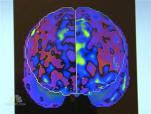So I said, "Absolutely, I'd be honored."
I'd already been following much of the discussion and was amazed how quickly the issue flared. One by one all the major cancer institutions and hospitals published their own recommendations and made their physicians available for interviews. Still, there's a lot of information/misinformation about the recommendations we need to keep in mind.
1) The guidelines are recommendation developed by an independent panel made up of representatives from excellent organizations, universities and think tanks. They ranked/rate six different methods for breast cancer detection.
2) The recommendations were based on scientific analysis of existing data -- I have the actual report -- its about twelve pages long. It doesn't readily condense to tweets, blurbs or anything like that, unfortunately.
3) Mammography has been controversial for a long time. Nothing new here. It under-detects some cancers (like mine) and over detects others that may not have ever developed into invasive disease. Mammography is problematic in detecting cancer in younger women. Most of the young survivors I know and have spoken with FOUND THE LUMP/discharge/change themselves and pursued their concern aggressively.
4) The recommendations have been the standard in Ireland since 2000. Are the comparative rates of breast cancer widely different? I don't know but will certainly check that out. I would be surprised if they are.
5) The recommendations are for "the average woman," the woman without risk factors. Women with risk factors are excluded. How those risk factors are defined will become an issue. I've already asked MD Anderson how they define 'risk factors' and as yet have received no answers. When I was diagnosed ('98) the doctors who examined me felt that two great aunts with breast cancer and an extensive family history of cancer on both sides of my family did not constitute a "risk factor." I said "oh, really?" then and would use the same tone of voice now.
All this said I wouldn't budge from the 2002 recommendations for a minute -- but not for the reasons you might think. The beauty of the existing system is:
1) It gets women in the doctor for some minimum of health care on an annual basis when other problems might be discovered;
2) We already have millions of uninsured women who are NOT being screened -- do we really want to add more to a potential public health catastrophe?
3) The health of the US public is already bad, growing heavier and exercising less (obesity a factor for BC);
I'm long winded but understanding is truly critical. We need to advocate for better detection methods for younger women -- the 50% under the median age of 61. We need to advocate for prevention, and continue advocating the benefits of the healthy lifestyles. We need to keep up the great example of understanding our own health.
So when Liz asked me if I thought the guidelines were fair? I said that numbers are numbers (I'm not going to deny a statistical modeling process I can't even describe) but no number or guidelines are fair if applied by insurance carriers to deny tests to women or men who need them. No way. That isn't fair at all.
Best regards to all of you,
jody






![[Fruit] Health Benefits of salak for diet and eye (Salacca, Salacca edulis) [Fruit] Health Benefits of salak for diet and eye (Salacca, Salacca edulis)](http://4.bp.blogspot.com/-kOF5rn4HLCQ/VBnhugT2OrI/AAAAAAAABsY/Ztl14SLSdrQ/s1600/Manfaat%2BSalak%2BPondoh%2Bbagi%2BKesehatan.jpg)









